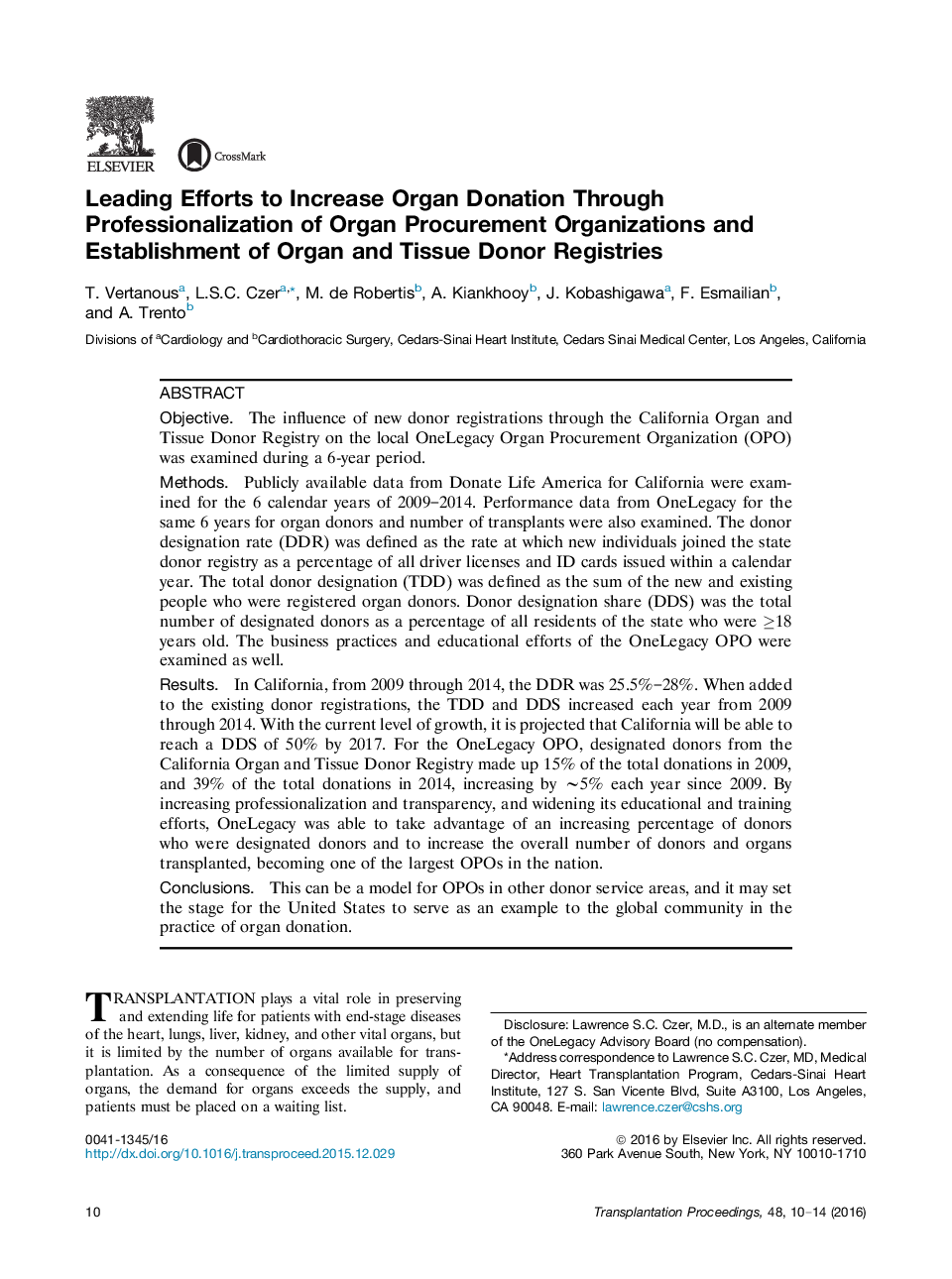| Article ID | Journal | Published Year | Pages | File Type |
|---|---|---|---|---|
| 6246985 | Transplantation Proceedings | 2016 | 5 Pages |
â¢The influence of donor designations through the California Organ and Tissue Donor Registry on the OneLegacy OPO was examined during a 6-year period from 2009 through 2014.â¢The total donor designations from the California Donor Registry increased each year from 2009 through 2014.â¢With the current level of growth, it is projected that the percentage of donors in California who are on the registry will reach â¼50% by 2017.â¢For the OneLegacy OPO in Los Angeles, designated donors from the California Organ and Tissue Donor Registry made up 15% of the total donations in 2009 and 39% of the total donations in 2014, increasing by â¼5% each year since 2009.â¢The OneLegacy OPO was able to take advantage of an increasing percentage of donors who were designated donors and to increase the overall number of donors and organs transplanted, becoming one of the largest OPOs in the nation.â¢This can be a model for OPOs in other donor service areas, and may set the stage for the United States to serve as an example to the global community in the practice of organ donation.
ObjectiveThe influence of new donor registrations through the California Organ and Tissue Donor Registry on the local OneLegacy Organ Procurement Organization (OPO) was examined during a 6-year period.MethodsPublicly available data from Donate Life America for California were examined for the 6 calendar years of 2009-2014. Performance data from OneLegacy for the same 6 years for organ donors and number of transplants were also examined. The donor designation rate (DDR) was defined as the rate at which new individuals joined the state donor registry as a percentage of all driver licenses and ID cards issued within a calendar year. The total donor designation (TDD) was defined as the sum of the new and existing people who were registered organ donors. Donor designation share (DDS) was the total number of designated donors as a percentage of all residents of the state who were â¥18 years old. The business practices and educational efforts of the OneLegacy OPO were examined as well.ResultsIn California, from 2009 through 2014, the DDR was 25.5%-28%. When added to the existing donor registrations, the TDD and DDS increased each year from 2009 through 2014. With the current level of growth, it is projected that California will be able to reach a DDS of 50% by 2017. For the OneLegacy OPO, designated donors from the California Organ and Tissue Donor Registry made up 15% of the total donations in 2009, and 39% of the total donations in 2014, increasing by â¼5% each year since 2009. By increasing professionalization and transparency, and widening its educational and training efforts, OneLegacy was able to take advantage of an increasing percentage of donors who were designated donors and to increase the overall number of donors and organs transplanted, becoming one of the largest OPOs in the nation.ConclusionsThis can be a model for OPOs in other donor service areas, and it may set the stage for the United States to serve as an example to the global community in the practice of organ donation.
